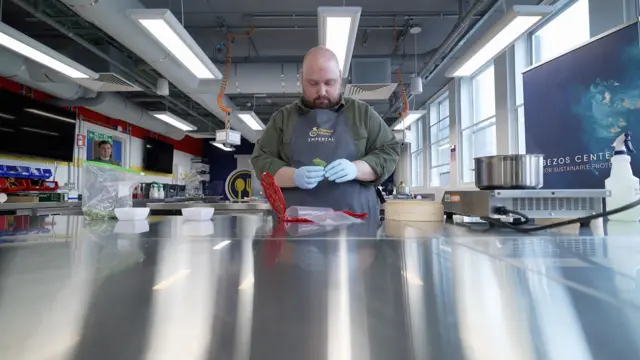Steak, mashed potatoes and desserts for astronauts could soon be grown from individual cells in space if an experiment launched into orbit today is successful.
A European Space Agency (ESA) project is assessing the viability of growing so-called lab-grown food in the low gravity and higher radiation in orbit and on other worlds.
ESA is funding the research to explore new ways of reducing the cost of feeding an astronaut, which can cost up to £20,000 per day.
The team involved say the experiment is a first step to developing a small pilot food production plant on the International Space Station in two years’ time.
Lab-grown food will be essential if Nasa’s objective of making humanity a multi-planetary species were to be realised, claims Dr Aqeel Shamsul, CEO and founder of Bedford-based Frontier Space, which is developing the concept with researchers at Imperial College, London.
“Our dream is to have factories in orbit and on the Moon,” he told BBC News.
“We need to build manufacturing facilities off world if we are to provide the infrastructure to enable humans to live and work in space
Lab-grown food involves growing food ingredients, such as protein, fat and carbohydrates in test tubes and vats and then processing them to make them look and taste like normal food.
Lab-grown chicken is already on sale in the US and Singapore and lab grown steak is awaiting approval in the UK and Israel. On Earth, there are claimed environmental benefits for the technology over traditional agricultural food production methods, such as less land use and reduced greenhouse gas emissions. But in space the primary driver is to reduce costs.
The researchers are doing the experiment because it costs so much to send astronauts food on the ISS – up to £20,000 per astronaut per day, they estimate.
Nasa, other space agencies and private sector firms plan to have a long-term presence on the Moon, in orbiting space stations and maybe one day on Mars. That will mean sending up food for tens and eventually hundreds of astronauts living and working in space – something that would be prohibitively expensive if it were sent up by rockets, according to Dr Shamsul.
Growing food in space would make much more sense, he suggests.
“We could start off simply with protein-enhanced mashed potatoes on to more complex foods which we could put together in space,” he tells me.
“But in the longer term we could put the lab-grown ingredients into a 3D printer and print off whatever you want on the space station, such as a steak!”
This sounds like the replicator machines on Star Trek, which are able to produce food and drink from pure energy. But it is no longer the stuff of science fiction, says Dr Shamsul.
He showed me a set-up, called a bioreactor, at Imperial College’s Bezos Centre for Sustainable Proteins in west London. It comprised a brick-coloured concoction bubbling away in a test tube. The process is known as precision fermentation, which is like the fermentation used to make beer, but different: “precision” is a rebranding word for genetically engineered.
In this case a gene has been added to yeast to produce extra vitamins, but all sorts of ingredients can be produced in this way, according to Dr Rodrigo Ledesma-Amaro, Director of the Bezos Centre.
“We can make all the elements to make food,” says Dr Ledesma-Amaro proudly.
“We can make proteins, fats, carbohydrates, fibres and they can be combined to make different dishes.”










